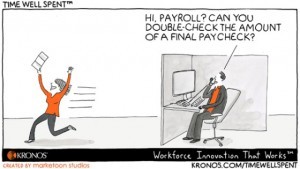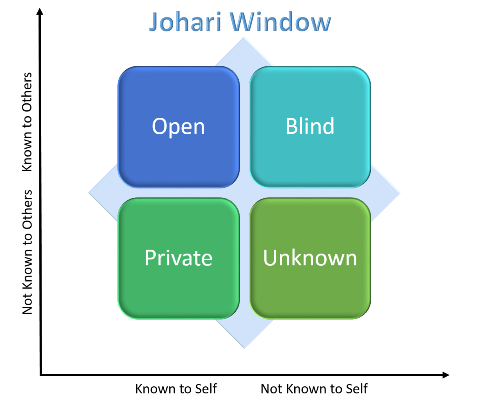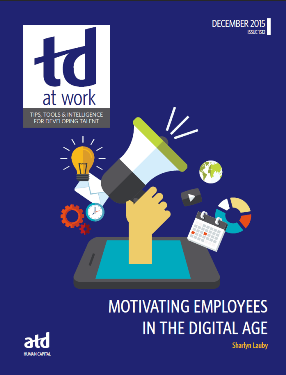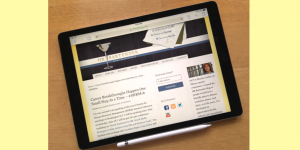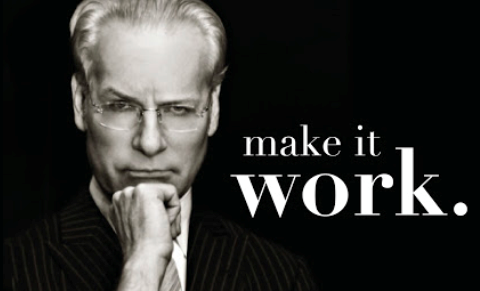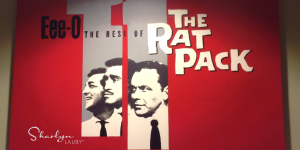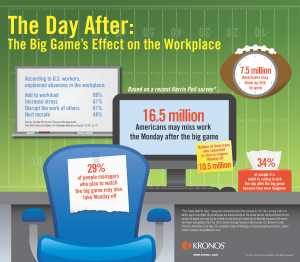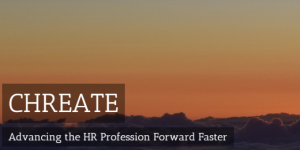Sharlyn J. Lauby's Blog, page 161
February 19, 2016
Money Doesn’t Buy Employee Engagement – Friday Distraction
(Editor’s Note: Today’s post is brought to you by our friends at Kronos , the global leader in delivering workforce management solutions in the cloud. They’ve recently partnered with Google to develop a suite of innovative workforce management solutions for small and midsize businesses. Enjoy the post!)
We’ve heard the old phrase “Money doesn’t buy happiness.” In fact, we were reminded of it quite a bit recently when the Powerball jackpot hit 1.5 billion. Yes, we need a certain amount of money to live. And we need it to save for the future. But a pile of money won’t automatically give us joy.
Today’s Time Well Spent from our friends at Kronos reminds us that money also doesn’t buy employee engagement. To me, this cartoon wasn’t about employee final paychecks. I’ve written about final paychecks before. You can see one of those posts here. This post wasn’t about the money. It was about disengagement and being free from the company.
Organizations need to make sure an employee’s final paycheck is correct. But they also need to make sure that they understand the reason an employee is leaving the organization. Communicating regularly with employees about their work and future, conducting stay interviews, and encouraging employees to give honest feedback during exit interviews can help organizations understand what makes employees stay and what makes them leave.
Once an organization understands those things that employees value, they can make sure those things are preserved in the culture. It can be a huge waste of resources to think employees are leaving because of their pay, when it’s really because of their manager. The company might not allocate resources toward manager training and development because they misread the situation – effectively making the real problem even worse.
Of course, money is important. But the answer to every question is not money. Organizations need to do proper research to understand when money will not a solve a problem and what to do instead.
The post Money Doesn’t Buy Employee Engagement – Friday Distraction appeared first on hr bartender.






February 18, 2016
The Learning Myth That Should Not Die
I ran across this article from the International Weekly Journal of Science titled “The science myths that will not die.” It’s what you would expect – myths that aren’t true but we keep perpetuating them. One of the myths jumped out at me because it was related to training.
Myth 4: Individuals learn best when taught in their preferred learning style.
The author of the article does point out a couple of truths associated with learning styles:
Many people do have a preferred way for how they like to receive information. And,
There is evidence to suggest that the best educational outcomes occur when information is presented in multiple modes (i.e. visual, auditory, and kinesthetic.)
This isn’t an episode of Mythbusters. I’m not here to take on the science community about learning styles. Learning is about communication and information. And, I totally agree with the author that each of us has a preferred way of receiving information. I’d even add that our preferred way might change depending upon type of information. For instance, I might prefer reading business subjects and hands-on for cooking topics. It might also be possible that our preferences change over time – my preferences as a college student could be different from today (and in fact, it is.)
I think the author’s point is that we cannot take a single test or assessment that will determine our preferred style and use that forever and ever in all situations. Which totally makes sense. To me, the importance of “learning styles” is for designers to create programs using multiple methods and for learners to receive information using multiple mediums. It’s even possible that we could learn more by venturing outside of our comfort zone and receiving information in a non-preferred style. As learners we have to be open to that possibility.
What designers, facilitators, and learners have to balance is using the “step outside of your comfort zone” option, but not as a way to force an uncomfortable learning experience. Most of us like learning in a safe environment. Learning involves making mistakes. So the reason a learner might embrace the concept of a “preferred style” is because it provides comfort and safety.
Organizations are paying a lot of attention to learning these days. Candidates need to be able to demonstrate they are capable of self-learning. That doesn’t mean simply learning what the company or their manager tells them. It means having a high level understanding of what they need to know, how they need to learn it, and what resources are the best to accomplish the task. On some level, I wonder if the whole conversation about preferred learning styles being a myth matters. Because the focus on learning isn’t going away anytime soon, we can use our preferred learning style as a basis for self-discovery, which really doesn’t require science. That’s no myth.
Image taken by Sharlyn Lauby at the Fort Lauderdale Museum of Discovery and Science on a lazy, rainy afternoon
The post The Learning Myth That Should Not Die appeared first on hr bartender.






February 16, 2016
Everything Leaders Need to Know About Mindfulness
Last year, I published an extremely popular post titled “Future Leaders Need Organizational Mindfulness.” Since then, I’ve seen several articles about mindfulness and leadership. It made me think that this might be good time to step back and ask some basic questions about this practice and its place in business.
So I reached out to Elad Levinson, who helped me with the first post. He is an experienced organizational development and effectiveness consultant as well as a practitioner of mindfulness. His background includes senior management roles with Stanford University, Agilent Technologies and ICANN. And he has a terrific LinkedIn feed of articles on the subject.
First off, what’s a brief definition of mindfulness? And is it the same as meditation?
[Levinson] Mindfulness is the basic human experience of being aware in the present moment of changes that occur in our physical, emotional, or mental responses.
Meditation is both art and science – it is a method for training the mind and emotions to be responsive, aware, and friendly.
Speaking of science, is there any science behind the practice?
 [Levinson] Thousands of research studies have been conducted on the practice and their results are published in peer-reviewed journals such as the Academy of Management Journal. Evidence-based research has shown that mindfulness is health enhancing, encourages positive mental and emotional states, and increases the quality of human relationships. A peer-reviewed journal, Mindfulness, publishes peer-reviewed articles related to the latest research.
[Levinson] Thousands of research studies have been conducted on the practice and their results are published in peer-reviewed journals such as the Academy of Management Journal. Evidence-based research has shown that mindfulness is health enhancing, encourages positive mental and emotional states, and increases the quality of human relationships. A peer-reviewed journal, Mindfulness, publishes peer-reviewed articles related to the latest research.
Why should an individual consider practicing mindfulness (i.e. what are the benefits)?
[Levinson] The immediate benefits are:
More control over an individual’s emotional reactions so that there is greater choice in interpersonal situations
Increased sense of “agency” – the experience of being an influential person in your own life story
Improved physical and mental well being
Improved problem solving and decision making ability
Increased capacity for stress
Improved focus of attention
Increased empathy or a better sense of understanding the experience of others
For mindfulness to be effective, should it become a part of your daily routine? Or is it something you can draw from only when you feel you need it?
[Levinson] You are best able to draw upon the value of mindfulness when you practice it regularly. On the other hand, studies have shown that even five minutes of practice can increase awareness and focus.
Mindfulness as a part of daily routine is very easy to implement. Take something that you do every day, such as eating breakfast, exercising, walking the dog, brushing your teeth, and during that time choose to be fully present, making an effort to do whatever it is with full undivided attention.
If I wanted to start practicing, where’s a good place to start (i.e. books, resources, apps, etc.)?
[Levinson] Here are four great places to start:
More Than Sound’s “What is Mindfulness?” podcast series. I also recommend their CD Working with Mindfulness , with esteemed instructor, Mirabai Bush. Mirabai is also a contributor to my Thriving on Change
Dharmaseed – There are hundreds of talks and free podcasts by topic or teacher. Start with Basic Mindfulness 101.
Any books, videos or podcasts by Jack Kornfield or Jon Kabat-Zinn.
Mindful.org publishes very useful articles and videos on the daily practical applications.
My thanks to Elad for sharing his knowledge. As our lives become more digitally connected and that feeling of “always being on” starts to grow, concepts like mindfulness can help us stay focused. It only takes a few moments a day.
Image courtesy of Sharlyn Lauby
The post Everything Leaders Need to Know About Mindfulness appeared first on hr bartender.






February 14, 2016
Radical Candor Is Not An Excuse For Bad Feedback
I’ve seen a few articles recently about a concept called “radical candor.” It is what you would expect it to be – the concept of pointing out the “elephant in the room” problems in organizations. It’s considered to be blunt, honest feedback. Some people are likening it to “fierce conversations,” “frontstabbing,” or “mokita.”
I’m not sure what to make of this. On one hand, it’s great that a conversation is emerging about how to address those “emperor has no clothes” moments. But I’m concerned about the label it’s getting. Frontstabbing?! Really?!
For organizations to be successful, they need to find ways to address touchy subjects. I’m not saying it’s easy. And it does take honest conversation. But when the honest conversation is labeled radical candor, that almost gives legitimacy to being insensitive. (As in, “Let me share with you some radical candor …”)
Every organization has elephants. Every. Single. One. You can call them your traditions, legacies, or whatever. But every company has some sacred cows or things they just don’t talk about as a group. They might talk about them behind closed doors or with body language, but they don’t get addressed. And they should. It reminds me of “The Abilene Paradox.”
No one wants to be the person who points out the obvious. Let’s face it – the person who usually points out the elephant is often an external consultant, a new employee, or an exiting employee. Someone who doesn’t realize they’ve just stepped in it or has no fear of retribution. Organizations need to create feedback mechanisms that do not create an atmosphere of fear when it comes to feedback.
Blunt, honest feedback does not have to be synonymous with mean-spirited. I’m sure I will get some pushback on this but I believe we’re sending the wrong message to tell people authentic feedback is the same as being “fierce” or “stabbing” or “radical.” The purpose of feedback is to create change. It should be delivered in a way that does exactly that. The sender needs to know their audience.
Instead of creating a new buzzword du jour, organizations need to create mechanisms for employees at every level to provide feedback. And they need to train employees on the best ways to deliver and accept feedback. It reminds me of the Johari Window, which was a communication model created by two American Psychologists, Joseph Luft and Harrington Ingham. The window has four panes:
Open: These are traits that both the participant and others are aware of.
Private: These traits are known by the participant only. A participant can move these to the Open pane through the process of disclosure.
Blind: These traits are only known by others. Others can move these to the Open pane through the process of feedback.
Unknown: These traits are not known by the participant or others. Maybe because they don’t apply in the relationship or they haven’t been witnessed.
The focus of the Johari Window is to use feedback and disclosure as a way to build trust and relationships. When individuals have trust, they do not need to “frontstab” each other. Trust lets each person know the feedback is coming from a place of sincerity and is well-intended. That’s not to say the conversation won’t sting a little – sometimes feedback does. But the recipient knows the feedback was not meant to harm. Just to help.
Organizations need to teach employees how to give and receive good feedback. And create a culture that encourages it at every level of the organization.
Images courtesy of Sharlyn Lauby
The post Radical Candor Is Not An Excuse For Bad Feedback appeared first on hr bartender.






February 12, 2016
Technology Can Boost Employee Engagement [infographic] – Friday Distraction
By now, all of us understand that technology plays a big role in our personal and professional lives. And we’ve all seen at least one article talking about employee engagement and the lack thereof. What’s important to remember is that technology isn’t the cause of employee disengagement, unless of course, someone intentionally made it that way.
In fact, when used correctly, technology can be a tool that helps engagement. Late last year, I had the opportunity to work with the Association for Talent Development (ATD) to produce an issue of TD at Work titled “Motivating Employees in the Digital Age.” It’s a follow up to my earlier InfoLine on “Motivating Employees.”
Honestly, we don’t have to recreate the wheel. We have the ability to use classic motivation theories in a modern context to engage today’s workforce. We do need to look at the wheel a little differently. And this is what this issue of TD at Work explores.
If you’re not familiar with TD at Work, it’s a subscription service that offers practical guides on talent development. The guides are short, filled with practical information and job aids. If you want to get a sense of what a TD at Work looks like, you can take a look inside the one I just wrote on “Motivating Employees in the Digital Age” by visiting here.
To motivate and engage employees today, we need to use the tools that are available to us. That includes technology.
The post Technology Can Boost Employee Engagement [infographic] – Friday Distraction appeared first on hr bartender.






February 11, 2016
The iPad Pro Might Be a Laptop Replacement (At Least For Me)
I’ve been doing more travel over the past year so I decided to upgrade my iPad to the Pro version. The reason? I must say that I’ve become quite spoiled with not having to travel with a laptop. Tablets are easier to travel with. And with a tablet, I can combine my professional and personal needs. My iPad has work files and applications like Word, PowerPoint, WordPress, etc. It also has fun apps like Recolor and 7 Little Words. And it has books, movies, etc.
But the question for me was “Can the iPad Pro do enough so I don’t have to take my laptop on business trips?” And after using it for a month or so, I think the answer is “yes.” Here’s what I’ve learned:
The big adjustment is interaction. What I mean by that is when I use my PC, I do one thing – type. OK, maybe two things – type and click. When I use my iPad, now I have to get used to more interactions – type, swipe, click, and possibly write (with the pencil – more on that later.) It seems to me that my success with the iPad Pro will be based on my willingness to have a somewhat new computing experience.
Yes, it’s a big screen. But I love it. The reports that it’s a challenge to hold for any length of time with one hand are true. But, the large screen is gorgeous and very easy to get used to. I have no issue using the iPad Pro on my lap or with the keyboard (addressed next.) The dual screen functionality really makes the iPad Pro a great device to work on. I can be writing a post using Word on half the screen and looking at an article on Safari in another.
The keyboard functions very well…with one exception. I had to wait close to a month after receiving the iPad Pro to get the keyboard. But I’m really happy with it. The keys have a nice feel. It’s easy to type on it. I also like that the keys don’t directly touch the tablet screen. That’s also a frustration – the smart cover can be configured two ways: one for keyboard use and other for tablet watching. Setting up the keyboard is easy. I still don’t have the knack of setting up the keyboard for watching. I’m confident it’s a user issue and I’ll figure it out eventually. But until then…
The keyboard shortcuts are awesome! For every program / app, there’s a list of shortcuts available. Just press the COMMAND key and they pop up. This only enhances the user experience.
It’s travel friendly. I typically travel with a tote and it fits all my stuff just fine. Side note: my latest fave is this Michael Kors. I wasn’t sure if this larger tablet was going to force me to rethink my travel bag, but it fits just fine. I don’t have to take it out for airport screening because it’s a tablet. Don’t have to turn it off for takeoff and landing because it’s a tablet. I was also a little concerned it wouldn’t fit in a hotel safe (they can be small) but I haven’t run into any issues yet.
The jury is still out on the pencil. I mentioned it took a long time to get the iPad Pro keyboard, well it took even longer to get the pencil. So I’ve only had it for a few weeks. Initial impressions are the pencil has a nice weight and it only takes a light touch to work on the tablet. This is light years ahead of the combo pen/stylus things we’ve been getting as conference swag. Downside? No place to store it. I did order this little gizmo – an Apple pencil dock and cap – which looks like it might do the trick. Oh, and another downside is figuring out its battery life.
I’m looking forward to Spring conference season when I’ll get to really put the iPad Pro to the test. Anyone else out there have the Pro version? What do you think of it? Leave us your thoughts in the comments.
Image courtesy of Sharlyn Lauby
The post The iPad Pro Might Be a Laptop Replacement (At Least For Me) appeared first on hr bartender.






February 9, 2016
Be Your Own Mentor and Make It Work
Confession: I’m a Tim Gunn fan.
Tim Gunn is the chief creative officer at Liz Claiborne and one of the mentors on the reality television program Project Runway. He’s known for telling designers to “Make it work!” during the competition.
Naturally, I was very excited to hear that he would be speaking at the Massachusetts Conference for Women along with Sophia Amoruso, author of the book #GIRLBOSS and founder of the fashion brand Nasty Gal, named one of Inc. Magazines fastest growing companies.
My takeaway from their session was this: Be your own mentor.
That’s right. Don’t wait for anyone else to help you. Be tenacious and create your own success. Rely upon you – and not anyone else – to turn your goals into reality. It was an interesting message coming from a guy that makes his living being a mentor on television. But he and Amoruso pointed out four things about mentors that convinced me there is some truth in their advice:
Your mentor cannot define success for you. So true. Everyone’s version of success is different. You have to define what success looks like for you.
Your mentor can’t want your success more than you do. To be successful, you have to want your success more than anyone else.
Your mentor cannot tell you what to do. Yes, they can make recommendations, but at the end of the day, you have to do it. No one else is going to do the work.
Your mentor cannot make you successful. Notice the three items we’ve just talked about. You have to define success, want success, and work toward success.
While I totally get it, this isn’t as easy as it looks. Gunn and Amoruso admitted that not everyone has the same opportunities in work and life. But they were both passionate about the importance of individuals taking control of their own learning – whether that’s by watching a video, reading a book, or listening to a podcast. I thought the advice they offered about becoming your own mentor could be applicable for anyone at any stage of their career.
Give yourself permission to discover yourself.
Do all you can with what you have.
Get comfortable with radical ideas.
I could see these mantras being something I’d want to look at and remind myself on a regular basis. Especially when I think I’m stuck. Remembering that I’m a work in progress. Making the most of the resources I have. And being open to new and very different ideas. Those aren’t necessarily things I need a mentor for.
Those are things as Gunn would say, I need to “make it work!” for myself.
Image courtesy of Quotesgram
The post Be Your Own Mentor and Make It Work appeared first on hr bartender.






February 7, 2016
Self-Management and No Management Are Two Different Things
A while ago I published a series of posts on the principles of self-management. It’s become a popular topic of conversation because a number of organizations are implementing holacracy. While the terms are being used interchangeably, they really aren’t the same thing.
Self-management is the concept that individuals have responsibility and authority for their own behavior. This might sound like a no-brainer but, in the workplace, layers of bureaucracy have created cultures where employees have to go to a manager to solve a problem or to resolve a conflict.
Holacracy is an organizational system created by Brian Robertson, former programmer turned management consultant. It’s rooted in self-management. But it deals with organizational structure and how to distribute responsibility and authority.
Notice that no where have we talked about the idea of eliminating managers. Companies that support self-management can still have managers. It’s just that the managers’ role is different. The manager spends their time supporting a self-managing structure. Same with holacracy, except the manager title is replaced with another term. Conceptually, it’s the same. Managers don’t spend their time controlling and directing employees. They spend their time encouraging and supporting the culture.
It’s important to understand that wanting a self-managing culture doesn’t mean you have to abandon hierarchy. Implementing holacracy will replace one organizational structure with a new and different one. But neither eliminates structure. The organizations out there saying, “We’re eliminating all managers and we will have no organizational chart…” Well, that sounds like they’re eliminating structure. And those organizations have to figure out how they are going to get things done without it.
In fact, companies that are reducing structure to become more efficient aren’t eliminating it. And organizations reducing structure might want to look at concepts like holacracy and self-management as ways to invigorate the organization while redistributing responsibilities. But again, implementing these concepts doesn’t mean they’ve created anarchy.
Organizations are going to be faced with some organizational challenges in the months to come. As it becomes more challenging to find qualified talent, companies will have to consider strategies such as reorganization and redistribution of responsibilities. Don’t let concepts like self-management and holacracy scare senior management from having the conversation. Electing to eliminate managers is a separate decision. Yes, some organizations are doing both at the same time. That’s their strategy to deal with.
Giving employees responsibility and authority for their work can increase engagement and improve the organization’s bottom-line. The only way it works is by making sure employees are prepared, trained and supported throughout the organization. What the organization calls those individuals is entirely up to them. But they do need to exist.
Image courtesy of Sharlyn Lauby
The post Self-Management and No Management Are Two Different Things appeared first on hr bartender.






February 5, 2016
Super Bowl Sunday Leads to Sick Day Monday [infographic] – Friday Distraction
This weekend is the Super Bowl between the Denver Broncos and the Carolina Panthers. The game is expected to draw at least 100 million viewers, making it one of the most watched events in U.S. television.
Even if you don’t like football, the Super Bowl has built a reputation for its commercials (be sure to check out this one with Helen Mirren,) and its excuse for eating junk food (here are the stats to prove it.) The Super Bowl is also famous for employees calling in sick either the day of or the day after.
According to a survey commissioned by The Workforce Institute at Kronos, an estimated 16.5 million U.S. adults may miss work the day after the big game. What I found interesting was, of that number, 10.5 million will have planned the day off in advance. The rest are planning to call in sick on Monday morning.
Oh, and that doesn’t include the 7.5 million who won’t call in sick but they’ll show up late. You can read the entire survey here.
It’s no wonder that in the past there’s been a movement to declare Super Bowl Monday a national holiday. Don’t believe me? Here’s the petition. Until that day happens, organizations have to find ways to let employees enjoy the game and not compromise the business. Here are some things to consider:
Get in the spirit. If employees have to work over the weekend, is there a way for them to enjoy the festivities? Maybe it’s letting employees wear football jerseys. Or having lunch brought in. Or putting a TV in the breakroom.
Be flexible. Not all companies are able to do this, but is it possible to give employees some scheduling flexibility so they don’t have to call in sick or late?
Communicate expectations. Let employees know what they can do. Tell them the goal is to have fun but get the work done.
Organizations, managers and employees all want the same thing – have fun, enjoy the game, and get the work done. Create an experience in which everyone can participate.
The post Super Bowl Sunday Leads to Sick Day Monday [infographic] – Friday Distraction appeared first on hr bartender.






February 4, 2016
Here Is What the Future of #HR Looks Like
A wide variety of articles exist about the need for human resources to change. Often those articles talk about the need for HR to be more of a “business partner” or “strategic” or “transformational.” But rarely do we see articles that address what the future jobs in human resources will look like.
Well, a group of human resources professionals has taken on the task. Project CHREATE is the global Consortium to reimagine HR, Employment Alternatives, Talent and the Enterprise. Their initiative is to map the future of the profession. Organizations including the Society for Human Resource Management (SHRM), PricewaterhouseCoopers, HR People + Strategy, and the National Academy of Human Resources are involved in the effort.
One of their first deliverables was the development of five job descriptions for HR roles in the future. The titles are:
Organizational Engineer
Virtual Culture Architect
Global Talent Scout, Convener and Coach
Data, Talent & Technology Integrator
Social Policy and Community Activist
You can check out the descriptions here. While I don’t know that these will actually be job titles in the future, I did see some trends that I thought were interesting. It could offer some perspective about the future of the profession.
Every role seemed to be a “connector.” What I mean by that is the roles connected talent with the organization, or talent with data, or the organization with the community, etc.
Human resources will have responsibility for corporate social responsibility (CSR.) The SHRM competency model includes CSR so expect to see more conversation about HR’s role in CSR in the future.
Technology, data, and analytics will be essential skills. And not just using social media. Coding, effective adoption, and influence will be front and center in the HR department of the future.
Work and life will not be separated. It doesn’t matter if you call it work/life balance or integration. Or if you say wellness or well-being. Bottom line: the whole employee matters. And companies must address it.
It’s very exciting to see groups like Google reWork and Project CHREATE starting to form. They’re sharing their expertise and views about the workplaces of the future. Again the idea isn’t necessarily to take their findings verbatim and implement them in your organization. It’s to think about them and ask yourself, “How would this work in our company?” and “How would we benefit if we did XX in our organization?”
But one thing is certain. Human resources is going to be relied upon heavily in the future. As HR professionals, we need to be prepared for it. Even if we’re on top of our game right now. The game is changing and we need to change with it.
The post Here Is What the Future of #HR Looks Like appeared first on hr bartender.






Sharlyn J. Lauby's Blog
- Sharlyn J. Lauby's profile
- 10 followers


